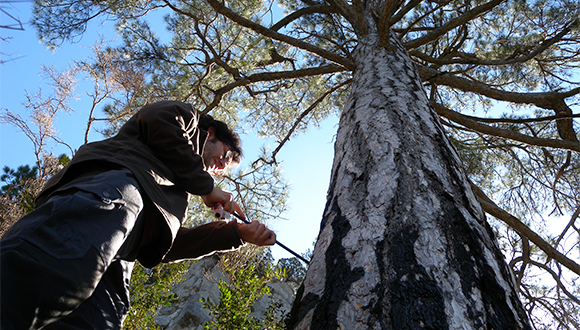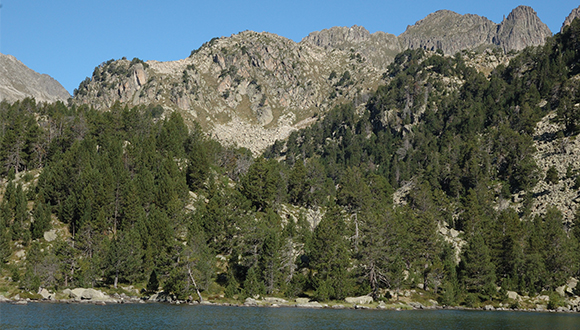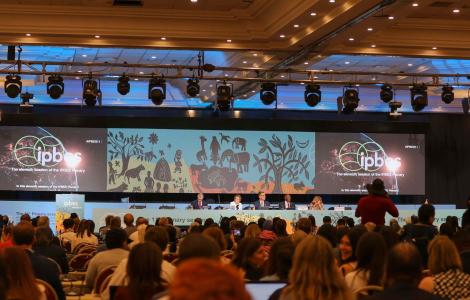CREAF helps Catalonia be a leading example in the fight against climate change

The Climate Group - States & Regions Alliance highlights Catalonia as an example to follow in areas such as transport, energy efficiency, governance, and adaptation and resilience to climate change; the latter two are areas in which CREAF participates actively, collaborating with the Catalonian Strategy for Adaptation to Climate change and as co-leader of the Pyrenean Climate Change Observatory.

2005 saw the creation of The Climate Group – States & Regions Alliance, an international coalition including more than a hundred international companies, institutions, and regional governments. This group is one of the most influential and effective actors worldwide in the debate on climate. The group also actively participates in the development of proposals for sustainable development policies and strategies. The Climate Group works mostly at the sub-state and regional level to achieve the kind of global action that will actually help reduce climate change.
The Catalonian Generalitat (regional government) is a noteworthy member, and the Climate Group highlights certain things that make Catalonia a good reference, praising initiatives such as: incentives for hybrid and electric transport; the objective of a 40% reduction in CO2 emissions by the year 2030 and of 80% of all greenhouse gasses by 2050; the Catalonian strategy for energetic renovation of buildings; adaptation and resilience embodied in the Catalonian Strategy for Climate Change Adaptation (acronym ESCACC in Catalán); and the research community's active participation and assistance in decision-making through the Pyrenean Climate Change Observatory (OPCC).
In what way does CREAF participate in climate change adaptation and resilience strategies?
CREAF has a number of projects related to climate change adaptation, in particular related to the themes of forests and water, coordinating with the Catalonian Office for Climate Change(OCCC). These projects offer political or administrative actors the possibility of working with a solid base of knowledge and scientific data.

In 2013 the results of CANVIBSOC were published, consisting of a recompilation of scientific information for technical and management audiences evaluating the vulnerability of certain forest species to climate change. This project led to the detection of areas lacking crucial information, mostly regarding certain plant species and the risk posed by forest pests. The project also highlighted the fact that species including beech and Scots pine could be seriously affected by droughts and wildfires associated with climate change; on the other hand, these are the kinds of disturbances to which the holm oak and Aleppo pine would be the most resistant.
Leading from these results, the project ForESmap was created in order to evaluate the effects of this loss and modification of certain forests. Initiated the 1st of April this year, ForESmap is a collection of maps evaluating the quantity and quality of ecosystem services at the municipal level (smallest level of governmental jurisdiction) for all of Catalonia. Understanding the benefits offered by forests is important for improved forest management and regional planning, and seeing how ecosystem services change with time and understanding their trends is one of the project's objectives for the near future. In fact, maps created by the project will be used for the Forest Resource Management Plans (PORFs), a forest management tool of the Catalonian Department of Agriculture, Livestock, Fisheries, and Food.
Additionally, in 2014 CREAF and the OCCC published the technical report C-BOSC tackling current carbon stocks and the sequestration capacity of forests. This tool had been designed for mitigating climate change, using predictions for the year 2050 based on two future scenarios, one optimistic and the other pessimistic.
There is also another project underway, Life-MEDACC, which studies different innovative methodologies for adaptation to climate change. This project monitors and experiments in forest zones of the Segre, Muga, and Ter valleys in Catalonia. By experimenting with different forest management strategies, the objective is to evaluate the efficiency and capacity of these strategies for improving water management and savings in urban and agroforestry systems in the coming decades.

CREAF participates in governance
In 2010 the Pyrenean Climate Change Observatory (OPCC) was initiated, charged with the mission of coordinating the eight large Pyrenean regions. With this project, the aim was to unify all knowledge to date on water, forests, biodiversity, climate and natural risks. The organization published a Climate Change Adaptation Report, one of the principal objectives of the OPCC. The intention of the report was to gather and synthesize existing adaptation strategies for mountainous areas, applicable to the Pyrenees, with recommendations and suggestions for the different managing administrations and governmental bodies.
Notícies relacionades

Una recerca descobreix que les arrels dels arbres caducifolis no dormen a l'hivern

L’IPBES publica dos informes per transformar la manera com ens relacionem amb la natura, conservar-la i sobreviure


